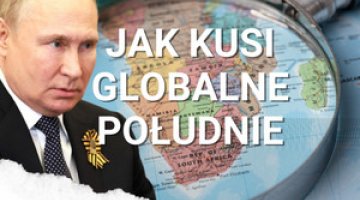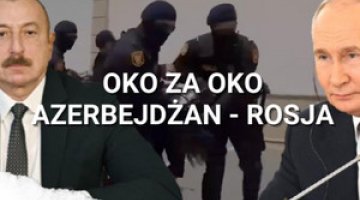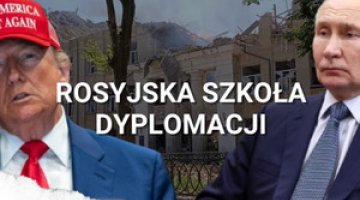Russia In Crisis: Year One
EXECUTIVE SUMMARY
Impact of the crisis on social and economic indicators
Economic conditions which had favoured Russia's development suddenly changed in mid-2008. The Russian economy was hit, on the one hand, by a drastic slump in oil prices (which fell from nearly US$150 to US$50 between July 2008 and January 2009), and on the other by the outflow of investors (a net of US$130 billion of capital left Russia in the fourth quarter of 2008). Within several months, the financial crisis became an economic crisis affecting the entire economy. The financial reserves accumulated in times of prosperity (more than US$162 billion in the stabilisation funds and nearly US$598 billion in the currency and gold reserve) alleviated the negative impact of the crisis, although this failed to prevent the deep declines in macroeconomic indicators.
Russia is one of the states most severely affected by the crisis. In the first half of 2009, its GDP fell by 10.4% compared to the same period in the previous year, while industrial production dropped by nearly 15%, and a decrease in investments of over 18% was reported. The poor economic performance has strongly affected the Russian budget, which reported a deficit for the first time in ten years in 2009.During the first year of the crisis (August 2008 – September 2009), Russia's financial reserves were seriously reduced as a result of the government's anti-crisis policy and interventions from the central bank: the reserve fund decreased by nearly 45% to US$76 billion, and the central bank's reserves shrunk by nearly US$200 billion to US$409 billion. Meanwhile, however, the money in the National Welfare Fund, which had been intended almost entirely to subsidise the Pensions Fund between 2010 and 2015, rose almost three-fold (to US$90 billion). According to government forecasts, the money from the reserve fund is also supposed to be spent fully in 2010.
The financial crisis has triggered a dynamic outflow of capital from the Russian market. So-called speculative capital was the first to demonstrate the lack of confidence in the Russian market. In the first half of 2009, the growth rate of long-term investments also decreased noticeably, although no spectacular withdrawal of direct investments from Russia has been observed. The economic crisis has also halted the foreign expansion of Russian private capital, while state-owned capital strengthened its position as an investor. Russia's raw materials companies continue to be the main category of foreign investors; however, new technologies are gaining prominence as the second main direction of Russian investments.
Standards of living in Russia have fallen as a result of the crisis. Because of rising unemployment, decreasing salaries and overdue salary payments, combined with high inflation, real incomes in Russia have started to fall for the first time after ten years of dynamic growth. In late 2008, Russia reported a rise in unemployment for the first time in ten years.In the period of oil-driven prosperity, unemployment fluctuated around 5–6%, but in the first half of 2009, it rose to 8–9% nationwide; unemployment rates in more than thirty individual regions of Russia are much higher than this. However, the problem that has been affecting the Russian employees most in the first half of 2009 concerned forced leave, part-time work and overdue salary payments. Between December 2008 and June 2009, between 600,000 and 1.4 million people worked part time, and between 1 and 2 million were on forced leave (often unpaid).Outstanding salary payments oscillated around 7-8 billion roubles (US$220–250 million) in the first half of 2009. Private-sector employees and workers with primary education in the production and processing sectors were among those most severely affected by the crisis.Employees in managerial posts also faced employment problems. In the public sector, on the other hand, employees were only slightly affected.
Because of the labour market crisis and rising prices, real incomes in Russia started to decrease for the first time in eight years, after having grown by more than ten percent a year on average since 2000. The deepest slump in incomes (by 11.6% compared to the same period in the previous year) was reported in December 2008. The reduced standards of living have resulted in an increase in the percentage of poor Russians in the entire population. According to Rosstat, the number of people living below the subsistence minimum (5083 roubles, corresponding to US$159, in the first quarter of 2009) increased by 6 million during the first three months of 2009 (24.5 million Russians currently fall into this category). The so-called monocities, built around large enterprises that employ most of the local active labour force, have become centres of economic and social problems; during the crisis many of these enterprises have found themselves on the verge of bankruptcy, which has drastically affected the population’s standards of living.
The government's reaction to the deepening crisis
The deepening financial crisis, which has quickly spread to the entire economy, has forced the Russian authorities to take action to address its negative consequences. However, the objective of the Russian government's 'anti-crisis' strategy has been not so much to tackle the systemic problems of the Russian economy, as to overcome the temporary economic difficulties while at the same time reinforcing the ruling elite's economic and political power. To implement this strategy, the authorities have been mainly using financial and propaganda instruments (welfare assistance and measures to reinforce Vladimir Putin's positive image, respectively), and have been preparing to use force in the event of any escalation of welfare problems and social protests.
The government's assistance plan envisaged spending 2.1–2.5 trillion roubles (around US$80 billion) between October 2008 and December 2009. The principal objectives of the government's anti-crisis program have been to maintain the banking sector's financial liquidity, stimulate internal demand, alleviate the negative impacts on society and support the enterprises of key importance for the Russian economy, many of which are controlled by members of the ruling elite. The state-owned Vneshekonombank (VEB), a state corporation which was established in 2007 to finance large investment projects in Russia, has been the main distribution channel for public aid. The government initiated these measures under high pressure of time and lobbying efforts by various interest groups, as a consequence of which the criteria for selecting the beneficiary sectors and enterprises have been arbitrary and untransparent, and state aid has been offered unconditionally (without imposing any requirement to restructure the inefficient companies).The anti-crisis measures have been accompanied by a large-scale propaganda campaign in the media, which was intended to channel the growing public frustration and to blame the regional authorities and businesses for the difficulties, while reinforcing Vladimir Putin's image as a politician capable of solving problems.
Impact of the crisis on economic, social and political trends
The economy
So far, the economic crisis has not triggered any thorough change in the Russian government's economic policy. On the contrary, it has accelerated the processes observed in the Russian economy since the final years of Vladimir Putin's presidency. The governmental anti-crisis programme has enabled a continuation of the original policy, which involved strengthening the state's role in the economy, the ruling elite’s appropriation of assets and the foreign expansion of Russian capital. During the crisis, many Russian private companies which found themselves in financial difficulties had to turn for assistance to the state, which has been one of the few actors still in the possession of cash. They have established liens on their assets to secure new loans, which has led to the renationalisation and marginalisation of large private businesses. Meanwhile, state-owned holdings benefiting from state aid have strengthened their market positions. Consequently, the government's anti-crisis measures have stimulated a process whereby the Russian economy has been abandoning the principles of free competition.
During the crisis the authorities have been continuing the policy, which had already been launched before the current economic troubles began, of opening up the Russian market, including the (most attractive) raw materials sector, in a controlled manner to foreign investors. Since 2006, Russia has been privatising minority stakes in attractive assets (Rosneft, public banks) and selectively admitting foreign companies to the extraction sector.
Russian society
At the level of the general public, the deteriorating living conditions have engendered some frustration and tension, although these have not transformed into broader mobilisation of the public or massive, nationwide protests. Neither has popular discontent led to a revision of the traditionally positive assessment of the top members of the government elite. Prime Minister Putin and President Medvedev have remained highly popular during the crisis. According to an August 2009 poll by the Levada Centre, up to 82% of Russians supported the actions undertaken by Vladimir Putin as PM, and 76% supported the activities of President Medvedev. Moreover, the propaganda campaign conducted by the authorities, combined with the traditionally passive attitude of the public and its habit of expecting others to solve problems, have led to a rise in hopes that the two politicians will tackle the most urgent social issues. The Russian people have blamed economic problems in the regions on the regional authorities, businesses and administration officials. At the same time, in the face of the deteriorating financial situation, the general public has devised individual strategies for dealing with the crisis through savings, taking extra jobs, taking loans, or growing fruit and vegetables in allotment gardens.
Internal policy
Even though the crisis has had a severe impact on the Russian economy, it has not shaken the dominant position of Putin's ruling elite. Given the current level of power concentration in the hands of the ruling elite, the economic factor seems to no longer have any direct impact on the elite's standing. In some areas, the crisis has even strengthened of the elite's position, especially regarding economic matters. This has been made possible by the leadership's control of the state finance reserves, which are the greatest providers of financing in the times of crisis. By controlling these funds, the Russian leadership has been able to speed up its economic expansion at the expense of those private businesses which do not boast any closer connections with the authorities.
Despite the crisis and the presidential reshuffle that preceded it, the Russian system of government has remained unchanged – the most important decisions are still being taken by the narrow circle of Putin's ruling elite (which cannot be identified with any particular institution), and are not subject to any political or social monitoring. The Putin elite has kept a monopoly on political power and has been using it to strengthen its own economic position. The crisis has not brought about any change in the composition or structure of the elite. Vladimir Putin remains its leader and the arbiter in charge of preserving equilibrium between the individual groups. The structure of the elite is informal, and the main membership criterion concerns belonging to a certain community – the elite is made up of Putin's trusted aides from his time in the KGB and the St. Petersburg mayor office. The crisis has not triggered any major conflicts among the elite members – although some disputes with a financial background have taken place, no schism has occurred, and the elite's grip on power has remained firm. Neither have any divisions been created by the presidential reshuffle; despite his more liberal and pro-democratic rhetoric, President Medvedev’s actions have in fact consolidated the Putin model of state governance.
Forecast
The most likely course of events in Russia over the next two years seems to be the so-called inertia scenario, which is based on the assumption that the oil price will remain at the current level (US$60–75 per barrel of Brent crude), as a result of which Russia will avoid a breakdown of its public finances. In 2010, these will be supported by the reserves amassed during the period of prosperity. The relatively stable financial situation will enable the authorities to maintain their current line of economic policy, including the further postponement of structural reforms, despite the fact that the crisis has exposed the threats involved in the Russian economy's dependence on the raw materials sector. This is because the ruling elite is firmly convinced that Russia's raw material resources will remain its main source of revenue for many years.
While the main trends in economic policy will remain unchanged, the government may decide to adjust economic policy in selected spheres. The authorities may make slight cuts to public assistance for the large state-owned companies, in other words, make assistance conditional on measures to improve efficiency. It is also possible that the Russian market will become more open to foreign capital and the new technologies it brings. The state is also likely to recommence privatising minority stakes in Russian companies, as long as it keeps control over the so-called strategic sectors of the Russian economy.
Recovery from the crisis will be a slow process, and Russia will not regain its pre-crisis level of development until 2012. It will continue to report a budget deficit in subsequent years as a result of extensive public spending. Some businesses will continue to cut employment, and some will face bankruptcy. As a result of the problems the companies experience, the difficult situation in the labour market will continue, and living standards in Russia will keep declining. More protests motivated by welfare issues will probably break out in the regions; however, the authorities will have instruments to control and neutralise them (by increasing welfare spending or by the use of force).
Despite the social and economic problems, the current ruling elite is expected to stay in power, mainly because there is no real alternative. The weak state institutions (parliament, courts) are controlled and used for political ends by the authorities and can offer no counterpoise. The regional elites and former oligarchs have lost much of their political influence and autonomy, do not participate independently in political manoeuvres and are not an autonomous political power. The crisis has not created any opportunities for any real anti-system opposition to emerge. Anti-Putin opposition in Russia is weak and dispersed, and has been effectively marginalised by the authorities for years (opposition members have no access to the media, are excluded from elections, and so on). The authorities are determined to defend their privileged position. If necessary, they will use the appropriate financial and propaganda instruments to neutralise any threats that may emerge, which will probably suffice in conditions of a crisis of medium severity.
The scenario of a deep and long-lasting crisis that could result in the financial failure of the Russian state is less probable, mainly because economic trends both in Russia and worldwide appear to be improving. Should this scenario materialise, the authorities would be forced to cut budget spending drastically or, in extreme situations (such as mass social unrest) use force to restore order and keep control of the situation. However, even in the event of a drastic escalation of economic problems and social protests, the likelihood of the current leadership losing power appears minimal. The authorities possess the instruments they need to control the situation, and are able to impede the emergence of real political alternatives. The only real threat could come from an internal split within the elite, for instance caused by conflicts over the allocation of funds. However, it should be emphasised that the current leadership is interested in stability and in ensuring that potential change is evolutionary, because it controls the major assets acquired in recent years, and will strive to avoid any violent conflicts that could result in reshuffles and a re-distribution of property.





